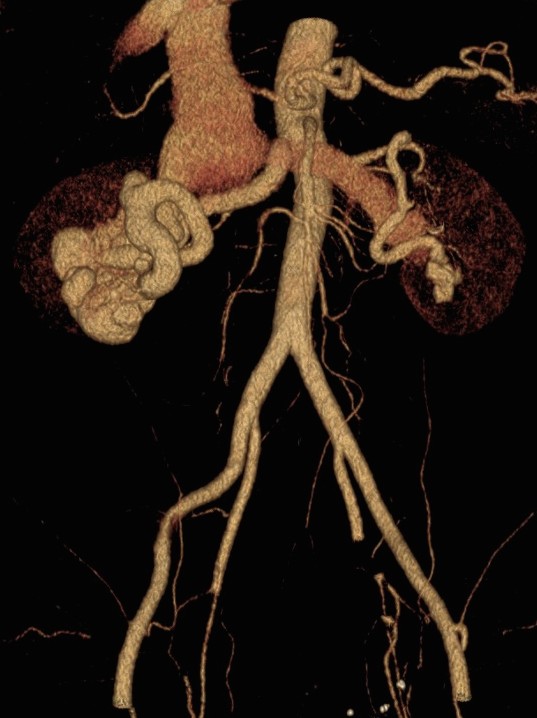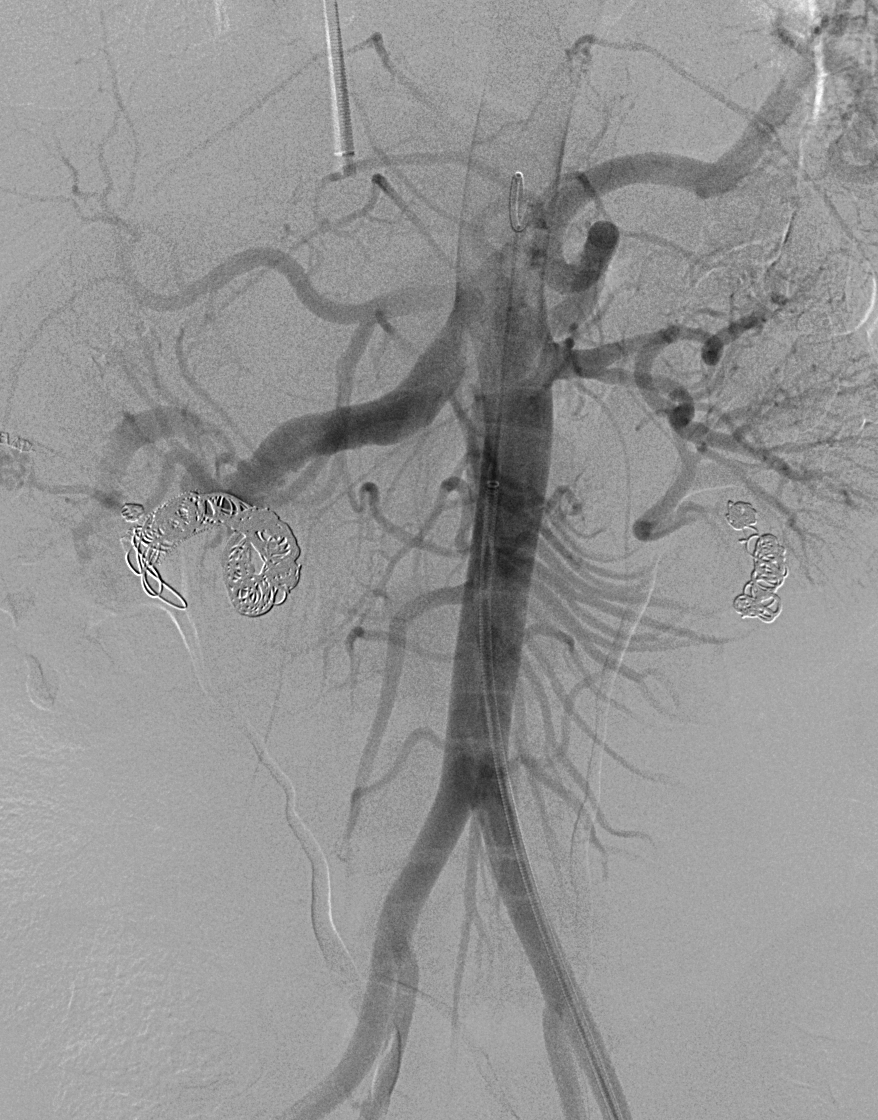Back to 2015 Annual Meeting Abstracts
Novel Endovascular Management of Bilateral Congenital Renal Arteriovenous Malformations: Case report and Clinical Review
Michael B Silva, Jr., Charlie C Cheng, Zulfiqar F Cheema
UTMB, Galveston, TX
Background:
We report the successful management of a 39 year-old man presenting with congenital renal arteriovenous malformations (AVMs). Initially suspected from auscultation of a flank bruit and confirmed by multiple imaging modalities, the clinical presentation included head aches, hypertension and reduced exercise tolerance.
Methods: Imaging revealed bilateral high flow AVM’s in the lower poles of the kidneys. With arteriography the normal renal parenchyma failed to visualize secondary to the high flow steal of the AVM’s. The inferior vena-cava (IVC) measured 5.5 cm secondary to increased volume. The AVM on the right measured 14 cm by 11 cm. The AVM on the left measured 4 cm by 4 cm.
Results: The left renal AVM was treated first with standard coil embolization techniques. Renal function scans were obtained at each stage of the management and remained unchanged. Standard attempts at coil embolization of the larger right cavernous renal AVM were unsuccessful with rapid movement of the largest available constrained embolization devices through the AVM into the IVC. Successful occlusion of the AVM was accomplished using novel endovascular techniques. Balloon occlusion of the venous outflow was performed via a right internal jugular approach. Two self-expanding 10 mm carotid Wall-Stents were deployed horizontally into the AVM and used as a scaffold for additional embolization coils. Post procedure ultrasound examination demonstrated successful occlusion of the AVM’s with normalization of IVC diameter. At 18 months follow-up the patient’s headaches have resolved, his blood pressure is well controlled, his renal function and exercise tolerance have returned to normal. We will discuss the clinical manifestations and surgical and endovascular alternatives for management of renal AVM’s.
Conclusions: We report a novel endovascular technique for management of bilateral renal AVM's.

Back to 2015 Annual Meeting Abstracts
